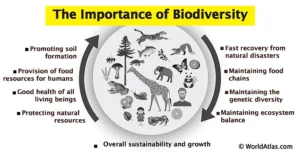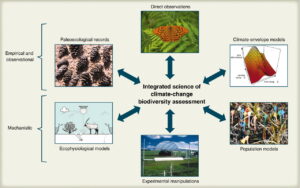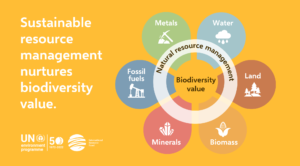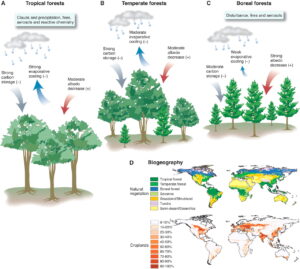Introduction
Forest biodiversity is a vital component of the Earth’s ecosystem, playing a crucial role in combating climate change and sustaining livelihoods. This article delves into the significance of forest biodiversity, its role in mitigating climate change, and its impact on local communities.
What is Forest Biodiversity?
Forest biodiversity refers to the variety of life forms found within forest ecosystems, including plants, animals, fungi, and microorganisms. These species interact in complex ways, creating a dynamic and resilient ecosystem. Forests cover about 31% of the Earth’s land area and are home to more than 80% of terrestrial species.
The Role of Forest Biodiversity in Climate Change Mitigation
Carbon Sequestration
Forests act as significant carbon sinks, absorbing carbon dioxide from the atmosphere and storing it in biomass and soil. This process, known as carbon sequestration, is essential in mitigating climate change. Diverse forests with a variety of species are more effective at sequestering carbon due to their complex structures and higher productivity.
Climate Regulation
Forests influence local and global climate patterns. They regulate temperature, humidity, and precipitation through transpiration and cloud formation. Forest biodiversity ensures the stability and resilience of these climate-regulating processes, helping to buffer against extreme weather events and maintain stable climate conditions.
Biodiversity and Ecosystem Services
Provisioning Services
Forest biodiversity provides numerous resources essential for human livelihoods, such as timber, non-timber forest products, medicinal plants, and food. These resources are vital for the subsistence of millions of people, particularly in rural and indigenous communities.
Regulating Services
Biodiverse forests offer crucial regulating services, including water purification, soil stabilization, and pest control. Healthy forests with diverse species maintain water quality by filtering pollutants and preventing soil erosion. They also support natural pest predators, reducing the need for chemical pesticides.
Cultural Services
Forests hold cultural and spiritual significance for many communities. Biodiverse forests often house sacred sites, provide recreation opportunities, and support traditional knowledge and practices. These cultural services contribute to the well-being and identity of local populations.
Threats to Forest Biodiversity
Deforestation and Degradation
Human activities, such as logging, agriculture, and urbanization, are major drivers of deforestation and forest degradation. These activities lead to habitat loss, reducing biodiversity and disrupting ecosystem services. Forest degradation also releases stored carbon, contributing to climate change.
Climate Change
Climate change poses a significant threat to forest biodiversity. Altered temperature and precipitation patterns can affect species distribution, phenology, and interactions. Climate-induced stress can make forests more susceptible to pests, diseases, and wildfires, further threatening biodiversity.
Invasive Species
Invasive species, introduced through human activities, can outcompete native species, leading to reduced biodiversity and altered ecosystem functions. Managing invasive species is crucial for maintaining forest health and resilience.
Strategies for Conserving Forest Biodiversity
Protected Areas
Establishing and managing protected areas is a key strategy for conserving forest biodiversity. Protected areas provide safe habitats for species and preserve ecosystem services. Effective management and enforcement are essential to prevent illegal activities and ensure long-term conservation.
Sustainable Forest Management
Sustainable forest management practices, such as selective logging, agroforestry, and community forestry, can balance resource use with conservation. These practices maintain forest cover, enhance biodiversity, and support local livelihoods.
Restoration and Reforestation
Restoring degraded forests and reforesting deforested areas can enhance biodiversity and carbon sequestration. Restoration efforts should prioritize native species and consider the ecological and social context to ensure long-term success.
Community Involvement
Engaging local communities in forest conservation is crucial for effective and sustainable outcomes. Community-based conservation initiatives empower local populations, respect traditional knowledge, and provide economic incentives for conservation.
Conclusion
Forest biodiversity is indispensable for combating climate change and sustaining livelihoods. Protecting and enhancing forest biodiversity through conservation, sustainable management, and restoration efforts is vital for the health of our planet and the well-being of future generations. As we face increasing environmental challenges, fostering a deeper understanding and appreciation of forest biodiversity is essential for creating a sustainable and resilient future.



